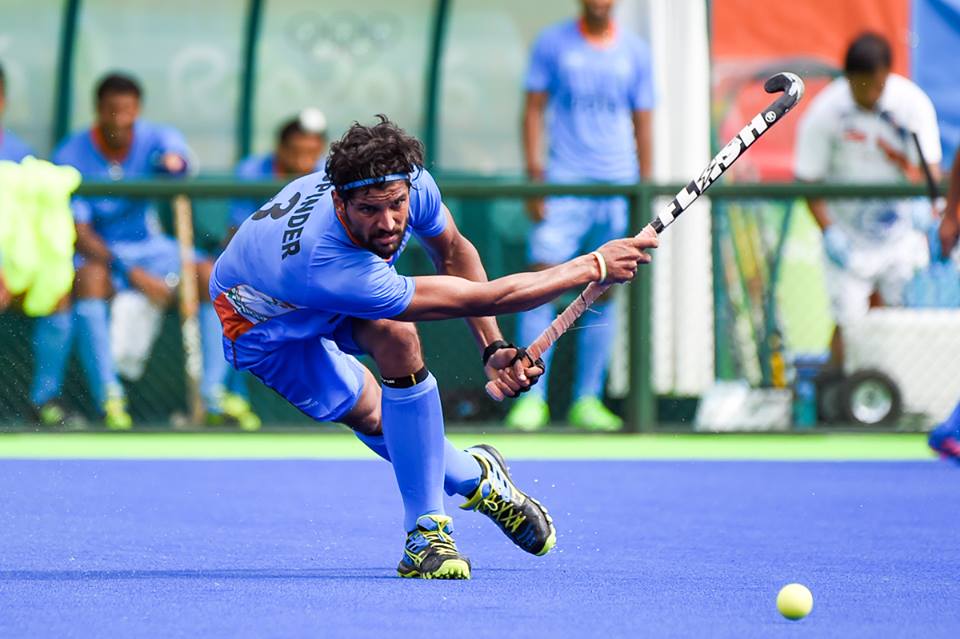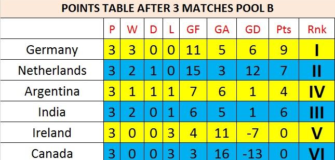Rio M: How can India tilt the final FIVE MINUTES i
Share
How can India tilt the final FIVE MINUTES in their favour?
Amongst the whole jubilation and sudden surge of expectations from the Indian Hockey team, I tend to ask the uncomfortable question: What won’t work for India in the next games?
Well, to begin with, when the forwards consistently NOT take shots at the goalpost, you tend to ask two questions?
One, is it coach’s strategy that the team plays to earn penalty corners and so forwards, when inside the circle, attempt to create penalty corners instead of choosing a direct shot?
This is a game-dependent strategy and can be quickly tweaked based on who is the opponent is. So, no worries!
The bothersome aspect is: Are the forwards sapped of energy because the primary thing on their mind is to defend?
Even though this has shown results in India’s favour, this strength in itself is the soft spot for India.
Let me ask you a simple question: How many times did you see Sardara Singh rallying the ball to other forwards?
Well, if you thought for a moment, there lies the answer. The opponents are marking the midfielders as well!
Take another example: The Argentines didn’t let Indians shuffle the ball between the defenders who were planning to build up an attack. Even on otherwise peaceful 16-yard hit, Rupinderpal, Surender and Raghunath were being chased about by Argentines.
In a nutshell, in the upcoming games, even the last one in the Indian line-up won’t be spared of pressure.
Against Argentina, Indians appeared exhausted in the final 10m. Recall, the ball that Sardara picked up and didn’t know what to do when he entered the rival circle alone? Even though this factor was more pronounced against Argentina, this was present against Germany too.
Both the opponents in the respective games took the marking on the score-board in the fourth quarter as a thorough insult and went out in violent-waves pouncing on the Indian defence.
If you argue that it was because of two games in two days, well the going will get tougher in the upcoming games.
Saying that Germany succeeded in the last three seconds is a partial truth. Defending for such long periods, as India has been doing against Germany and Argentina, is an unsustainable strategy. This strategy for prolonged periods is bound to concede a soft-goal when the opponents are disciplined determined and experienced, like the Germans.
India has already proved that they are mentally strong and can put up a stellar defence for three quarters and a little bit into the fourth quarter.
So, the question remains, for how long can they (or rather, would be able to) display that mental strength and bear all eleven opponents in their quarter?
Who will give them the much-needed break? The Forwards? Shuffling around the ball building a flank-based attack? Counter-attacks?
I don’t know what Oltmans has on his mind. If I can see this as an observer, he would have prayed for India during the game itself. Here’s what they can do more often.
1) Goalkeeper calls for a legal break: Recall what German goalkeeper did in the final 10m? He asked for change of gloves! Sreejesh, the captain of the team, has the best view of the turf and his teammate’s energy-levels, too. He can use the rules in his team’s favour to slow down the onslaught.
2) Take a pause often: The team can also slow-down a bit while executing or defending penalty corners.
When Sunil fell down yesterday, he was clever enough to slowly rise from the ground. On another occasion, Manpreet did the same. Neither too slow to get a stretcher called nor too fast to start the game in the next second.
India can think for a second while taking a free-hit. As done aptly by Sunil, India also needs to more of those time-guzzling, otherwise needless, dribbling in the corners of opponent’s quarter.
3) Scoop and breathe easy: When the attacks are unstoppable and relentless, India can get rid of the ball by a mere scoop into the wilderness of the opponent half and buy some time. What India is doing is exactly the reverse. On more than handful occasions, they tend to retain the ball in their jam-packed quarter, and then get it stolen. Good strategy to a build a counter. Backfires when over-used while defending!
4) Have a good meal but not eat cards: India ate 3 Green cards and 1 Yellow card in the game against Argentina. That amounts to 11m! Add another few minutes for the time consumed in changeovers and that comes to nearly one full quarter!!
For one full quarter, 10 men played 1.1 times of their potential!
The third match from now would be an elimination one. What if it goes into extra-time and then a tie-breaker? Would Indians have the same energy levels to survive in the extra-time?
Indian strategy is that of a defensive-game, relying solely on counters. Even there also, pick short-corners, take a breather and let the on-fire, Rupinderpal, do the rest.
That has won many Indian hearts till now. Will it win the upcoming games? Can’t say.
However, as the saying going, attack is the best defence. In the 3m against Argentina, India took the game in Argentine quarter and that is where everyone got a much needed break from defending, and India sealed the game in their favour. At the final whistle, the ball was outside Argentine circle.
India has shown a lot of promise and has drawn attention from a lot of non-Hockey followers with their terrific, stellar performance in Olympics.
A little of thinking and a few baby steps focussing to retain energy for the final 5m would surely be the gateway to a much-awaited podium finish.
Photo Courtesy: Yan Huckendubler



